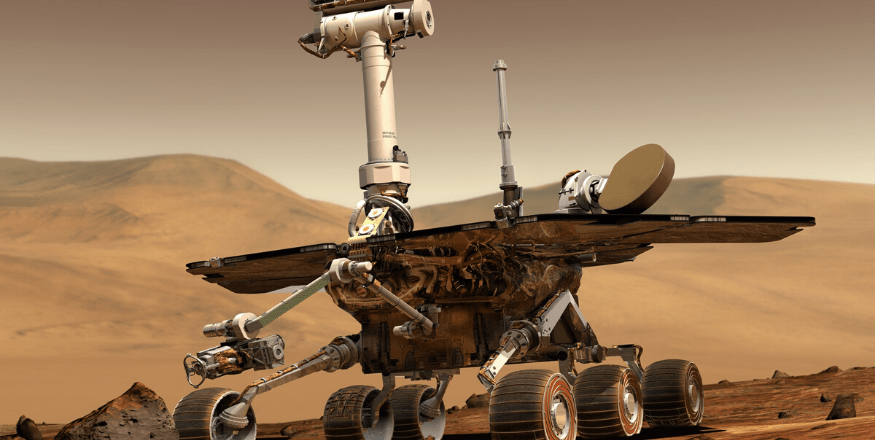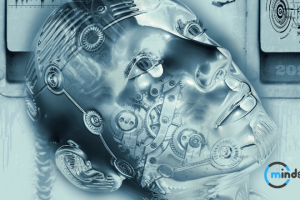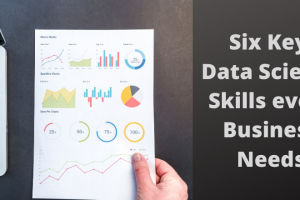
Why Artificial Intelligence is a Hot Technology?
Artificial Intelligence (AI)
Artificial Intelligence (AI) machines are machines that think and behave intelligently. These machines are controlled by the algorithms programmed inside them, so AI has a lot to do with intelligent algorithm programs that govern their actions. AI is a science of creating theories and methodologies that can help machines understand the world and react to situations exactly as humans do.
If we examine how the field of AI has evolved over the last couple of decades, it is evident that different researchers focus on different concepts of AI. In this dispensation, Artificial Intelligence (AI) is employed across many disciplines in many different forms. We want machines that can sense, reason, think, and act. We want our machines to be capable of taking a rational approach as well.
The study of Artificial Intelligence (AI) is closely related to the study of the human brain. Researchers believe that AI can be developed by understanding how the human brain works. By replicating the way the human brain carries out its operations and functions, we can build a machine that can perform similar operations and functions. This can be used as a model to develop intelligent systems that are capable of learning.
Defining Intelligence using Turing Test
The distinguished computer scientist and mathematician, Alan Turing, postulated the Turing Test to create a definition of intelligence. It is a test to see if a computer can learn to replicate human behavior. He defined intelligent behavior as the ability of a computer to achieve human-level intelligence during a conversation. This performance should be sufficient to deceive an interrogator into thinking that the responses are coming from a human.
To check if a machine can carry out this operation, he proposed an experimental setup where a human will interrogate the machine through a text interface. One of the constraints is that the human participant must be unaware of who is on the other side of the interrogation, which means it can either be a human or a machine. To demonstrate this, the human will be interacting with two different systems through a text interface. These two systems are called respondents. One of them will be a human and the other one will be the machine.
The respondent machine passes the test if the interrogator is unable to tell whether the answers are coming from a machine or a human. This is quite a difficult task for the respondent machine. There are a lot of things going on during a conversation. At the very minimum, the machine needs to be well versed with the following:
Natural Language Processing:
The machine uses this language to communicate with the interrogator. The machine needs to analyze the sentence, extract the context, and give an appropriate answer.
Knowledge Representation
The machine should be able to store the information provided before the interrogation. It should also be able to keep track of the information provided during the conversation so that it can respond appropriately if it encounters the same information again.
Reasoning
The machine should be able to understand how to interpret the information that is stored. Humans do this automatically to draw conclusions in real-time.
Machine Learning
This process enables the machine to adapt to new conditions in real-time. The machine should be able to analyze and detect patterns so that it can draw inferences.
The human only has to communicate with a text interface because according to Turing, physical simulation of a person is unnecessary for intelligence. That is the reason the Turing Test avoids direct physical interaction between the human and the machine. Another test is the Total Turing Test, it deals with vision and movement. To pass this test, the machine must-see objects using computer vision techniques and move around using robotics.
Branches of Artificial Intelligence (AI)
Researchers in AI specialize in different branches. Therefore, understanding the different branches of AI that are existing will provide a complete picture of the opportunities that come with it. Some of these branches are:
Machine Learning and Pattern Recognition
Currently, this is the most popular form of Artificial Intelligence (AI). We design and build algorithms that can learn from data. Based on these learning models, predictions on unknown data are carried out. One of the major limitations here is that these systems are limited to the size of the data. If the dataset is not much, then the learning models would be limited as well. When a system makes an observation, it is trained to compare it with what it has already seen in the form of a pattern. For example, in a face recognition system, the algorithm will try to match the pattern of eyes, nose, lips, eyebrows, and so on in order to find a matching face in the existing database of users.
Logic-conscious Artificial Intelligence (AI)
Mathematical logic is used to execute computer programs in logic-conscious AI. A program written in this type of logic is basically a set of statements in a logical form that expresses facts and rules about a particular problem domain. These types of AI machines have broad applications in pattern matching, language analysis, and semantic analysis.
Search
Search techniques have a wide range of applications in Artificial Intelligence (AI) programs. These programs consider a large number of possibilities and then pick the most optimal path. A typical case study is in strategy games such as Chess, others are networking, resource allocation, and scheduling.
Knowledge representation
It is important that we represent the facts about the world around us in a way machine systems will understand. The languages of mathematical logic are readily employed for this purpose. As knowledge is represented efficiently in machine systems, the machine systems will become more intelligent.
Planning:
Artificial Intelligence (AI) in the planning domain is concerned with optimal planning that yields maximum returns with minimal costs. The system for this purpose starts with facts about the particular situation and a statement of the goal. This system is also aware of the rules governing different sections of its operations, so it knows the rules and readily applies them. From this information, it generates the most optimal plan to achieve the goal.
Heuristics:
A heuristic is a technique used to solve a given problem that is practical and useful in the short term, but not guaranteed to be optimal. This is more like an educated guess on what approach should be taken to solve a problem. In Artificial Intelligence (AI), we often face situations where we cannot consider all the possibilities to determine the best option. So, a heuristic is employed to achieve the goal. Heuristics are used extensively in robotics and search engines.
Genetic programming:
One of the central challenges of computer science is to make a computer to carry out its task, without telling it how to do it. Genetic programming makes this possible by providing a method for creating a working computer program from a high-level problem statement of the problem. Genetic programming is a domain-independent method that genetically breeds a population of computer programs to solve problems.
The Rising Influence of Artificial Intelligence (AI)
In relation to other fields such as Mathematics or Physics that have been around for ages, AI is relatively in its infancy. However, over the last couple of decades, AI has led to some outstanding technological triumphs such as self-driving cars and intelligent robots. The present trend has demonstrated AI will definitely impact every aspect of our lives. With AI, smart systems can be created and the reality of intelligence machines becomes more glaring. The intelligent systems that we create from AI are very useful in understanding how an intelligent system like the human brain carries out the operation of creating another intelligent system.
We are always awestruck on how the human brain manages to perform many complex processes with such effortless ease. We can identify objects, understand languages, acquire new skills, and perform many more sophisticated functions with our brains. When a machine attempts any of these processes, it falls short of expectations. For example, when we try to look for entities such as extraterrestrial life or time travel, we don’t know if those things exist. However, employing Artificial Intelligence (AI) in this operation signifies that those entities actually exist. The human brain is the holy grail. It is an excellent example of an intelligent system. All that is required is to replicate its functionality to create an intelligent machine that can do something similar, and even more.
Artificial Intelligence (AI) continues to attract attention because our world has been transformed into a world where:
1. We are forced to work with an enormous and insurmountable quantity of data. The human brain cannot work on this type of data because of the unusual volume, variety, and velocity, that characterize them.
2. We have a torrent of data originating from multiple sources simultaneously.
3. The data are in an unorganized and chaotic form.
4. Insight generated from this data has to be updated continuously because the data itself keeps changing.
5. Sensing and actuation have to take place in real-time with high precision.
Although the human brain can efficiently analyze things in its environment, it cannot keep up with the preceding conditions. So, we need to build intelligent machines that can:
1. Handle large amounts of data in an efficient way. With the advent of cloud computing, we can now store an enormous amount of data.
2. Ingest data simultaneously from multiple sources without any lag.
3. Catalog and arrange data in a way that allows us to derive insights.
4. Learn from new data and update continuously using the right algorithms.
5. React adequately to situations based on the conditions in real-time.
The above necessities were the driving forces for the emergent of Artificial Intelligence (AI) systems that are actively being used to execute faster and more efficient processes that were initially considered at best difficult, and at worst impossible. AI technology is responsible for the rising influence of intelligent machines. Some of the influence is evident in the following areas:
Computer Vision:
These are the systems that handle visual data such as images and videos. These systems are built to recognize the image in the data and extract insights based on the use case. For example, Google employs a reverse image search to find visually similar images across the Web.
Natural Language Processing:
The aim of this domain is to decipher the text. Humans interact with a computer by typing natural language sentences. Natural language processing is actively used by Search engines to deliver the right search results.
Speech Recognition
These systems are built for hearing and understanding spoken words. For example, there are intelligent personal assistants on our smartphones that can understand our speech and give relevant information or perform an action based spoken words.
Expert Systems:
These are intelligent machines that provide advice or make decisions. They usually employ databases of specialized knowledge areas such as finance, medicine, agriculture, governance, and so on to give advice about what to do next.
Games:
The active use of Artificial Intelligence (AI) in the gaming industry has brought about the explosive growth in the industry. A major milestone is the creation of AlphaGo, the first artificial intelligence system to defeat a professional human in the strategy game of Go. AI is also used in building many other types of games where we expect the computer to behave intelligently.
Robotics
Robotic systems are a combination of many concepts in Artificial Intelligence (AI). These systems are able to perform many different operations. Depending on the purpose, robots use sensors and actuators to carry out different functions. These sensors can see objects in front of them and measure the temperature, heat, movements of objects in their environment. Robots are made of processors that perform analytics and computations in real-time, thus making it easy for them to adapt to a new environment easily.
Final Thoughts on Why AI is a Hot Technology
Today, AI is intertwined with our lives. We use Artificial Intelligence to power our daily tasks. Smartphones use AI that assists with the search, taking photos, and other routines that define our lives. AI technology in vehicles helps with parking, collisions, pedestrians, and cruise control. In spite of the fear of artificial intelligence takeover, the final conclusion is that AI has countless benefits and far-reaching applications. Research into precautionary measures to ensure future super-intelligent machines remain under human control is what is needed as advocated by Stephen Hawking and Elon Musk.


